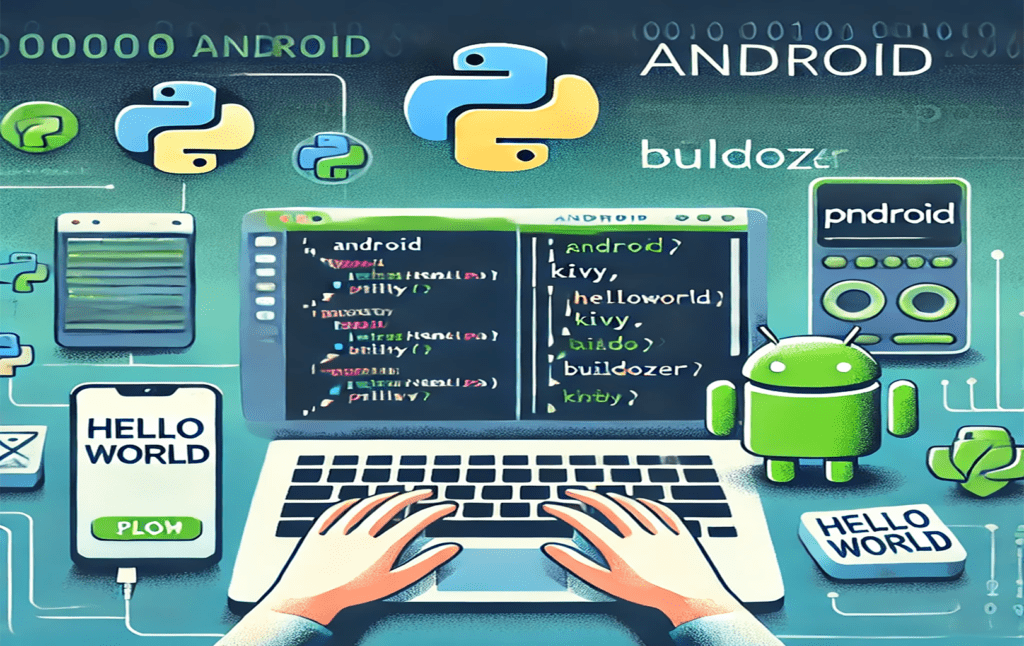One of the most effective tools for executing Python code in a cloud setting is Google Colab. It offers a ready-to-use configuration and free GPU access. Unexpectedly, it can also be used to create mobile applications using Buildozer, a well-liked tool for turning Python Kivy programs into Android APKs. This blog examines Buildozer’s use in Google Colab, taking into account both its special benefits and possible disadvantages.
Why Use Buildozer in Google Colab?
Buildozer is a tool specifically designed to make packaging Kivy applications into Android APKs extremely simple. Installation in local machines can be quite annoying, especially when there are dependency conflicts and system requirements. Google Colab fixes most of the issues due to its fully cloud-based isolated environment.
Step-by-Step Guide to Using Buildozer in Google Colab
Step 1: Set Up Google Colab Environment
- Open Google Colab.
- Create a new notebook.
Step 2: Install Required Tools
Install Buildozer and its dependencies in Colab. Execute the following commands in a cell:
!sudo apt update
!sudo apt install -y python3-dev python3-pip build-essential git
!sudo apt install -y git zip unzip openjdk-17-jdk python3-pip autoconf libtool pkg-config libncurses5-dev zlib1g-dev libtinfo5 libncursesw5-dev cmake libssl-dev libffi-dev
!pip install cython==0.29.36
!pip install buildozer Step 3: Upload Your Kivy Project
- Zip your Kivy project folder, e.g., my_app.zip.
- Upload it to the Colab environment using the following code or directly upload it using file manager on left side of colab :
#python code
from google.colab import files
uploaded = files.upload() Step 4: Unzip and Change Directory
Unzip your project and then change into the directory:
!unzip my_app.zip
%cd my_app/ Step 5: Initialize Buildozer
Get a buildozer.spec file with the following commands:
!buildozer init Edit buildozer.spec as needed, for example, app name, version, and requirements.
Step 6: Compile Your APK
Use this following command to compile the APK:
!buildozer -v android debugThis will download the Android SDK/NDK tools from the net and package your app.
Step 7: Download the APK
Download the APK file from the bin directory once the build is complete:
from google.colab import files
files.download('bin/my_app.apk')
Advantages of Using Buildozer with Google Colab
- No Hassle Local Setup
Colab eliminates the need for installing and configuring Buildozer and Android tools on your system.
- Resources are Free
Google Colab is free compute power which saves the need for a high-performance development machine.
- Cross Platform
Your can develop Android APKs from any device with a browser, which doesn’t matter what is operating system
- Isolated Environment
This isolated environment provided by Colab avoids dependency issues and ensures consistency in builds
Disadvantages of Using Buildozer in Google Colab
- Storage Issue
Colab’s transient memory is not suitable for big projects or multiple builds since it resets on disconnect.
- Building Speed
While Colab provides decent resources, building will still be slower than a local high-performance machine.
- Dependency Management
Dependencies install each time the session is launched and that causes overhead.
- APK Debugging
Colab isn’t built to debug APKs so issues need to be tested and debugged elsewhere .
Best Practices
- Backup Your Work: Before the Colab sessions expire, save your progress and configuration frequently to avoid losing the data.
- Prune Dependencies: Ensure that the buildozer.spec file contains only those dependencies that are absolutely required to reduce build times.
- Test Locally First: Try testing your Kivy app locally before attempting to package it with Buildozer in Colab.
Conclusion
One of the innovative use cases for Buildozer in Google Colab is avoiding all the hassle and headache associated with a local environment setup. This is, therefore, an alternative that is cloud-based for building Android APKs. However, it is better for lightweight apps and quick builds rather than large-scale projects. Keeping both pros and cons in mind, this can be a very valuable addition to the toolkit of any developer using Python.




Hey!
great article! Each instructions are so clear and straight forward make my job done.
Thanks my work is completed.